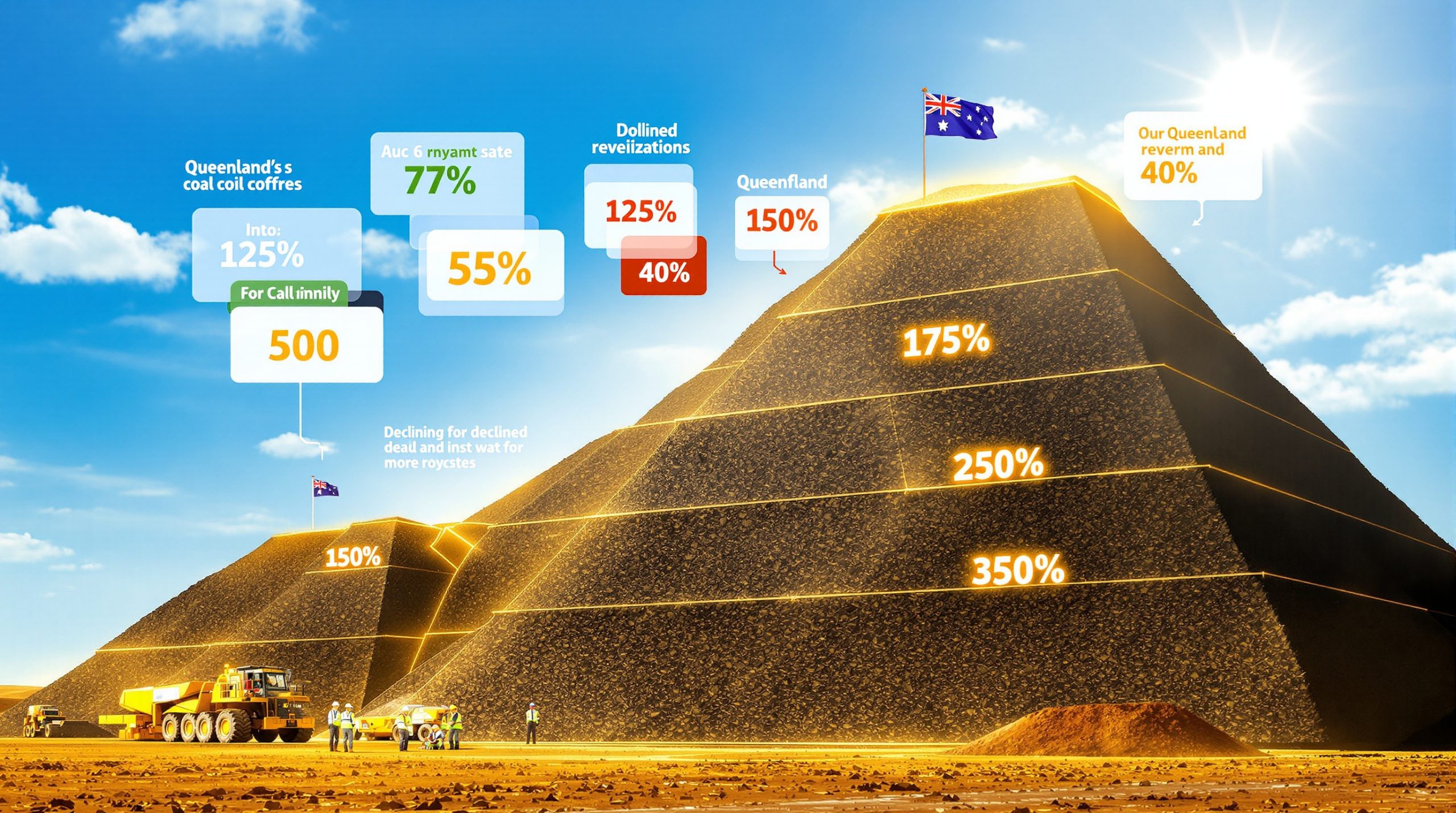Australia's mining landscape has evolved rapidly in recent years. The renewed investor interest in the Australian and Canadian mining industry trends is evident in price movements and production ramps. Gold stocks, for instance, have surged on the ASX with a 32% increase in trading volume over the past year. This momentum, supported by an in-depth analysis on why gold stocks struggle, reflects global economic uncertainty while solidifying gold’s safe-haven appeal.
Australia’s resource sector has seen several shifts across commodities. Gold’s resurgence contrasts sharply with lithium’s recent downturn. Lithium once thrived for two years until its prices fell 65% from the 2022 peaks. The decline resulted from oversupply in Australian spodumene projects and a slowdown in electric vehicle adoption. Now, companies like Greenbushes Lithium Mine have cut production by 20% in 2024, redirecting capital into tantalum operations.
Western Australia remains the leader in mining investment. In 2024 alone, the state attracted A$43 billion—accounting for 68% of national mineral exploration expenditure. This concentration of investments reinforces its status as the premier mining jurisdiction. The robust performance in Australia is complemented by emerging strategies overseas, such as mining and finance industry predictions for 2025.
Copper exploration is also gaining traction. Permits in Queensland increased by 27% year-over-year. Supply constraints, driven by projected deficits in global chains by 2030, have spurred significant investments. Major players like BHP are funding projects such as the close-to-A$1.7 billion Olympic Dam Expansion in South Australia, which aims to boost output by 40% come 2027. This environment is further boosted by rio tinto’s bold shift boosting copper’s role in clean energy investments.
Uranium is another commodity on the rise. As nuclear energy gains policy traction, uranium's market stands out. Investors note its potential as part of the global clean energy push. Small Modular Reactors drive further interest, although hurdles such as Indigenous land rights challenge active projects. The market presents clear strategic opportunities in uranium investment with captivating prospects for those keen on long-term nuclear energy returns.
A report recently published by the ASX highlights the boom in copper investing against the backdrop of broader resource demand. Meanwhile, the mining finance sector continues to underscore fundamental shifts. The ASX’s dynamic environment has encouraged a 32% higher average IPO size compared to Canadian listings. External perspectives, such as a global mining excellence update, offer evidence of these transformative trends.
Comparing Australia and Canada, the difference in mining finance is stark. The ASX fosters a vibrant retail investor base with 42% of mining trades conducted by individuals. Australia’s Self-Managed Super Fund setup empowers these investors, unlike Canada where only 18% of trades are by retail participants. A Macquarie Capital Analyst adds that the ASX dual-class listing structure further advantages junior companies in accessing liquidity.
Canadian markets, in contrast, are dominated by institutional money. Major banks’ control over brokerage houses interrupts liquidity for junior explorations. Canadian pension funds, for instance, allocated less than 2% to junior stocks in 2023. This emphasizes the financing gap where smaller projects are hurt by a lack of suitable capital. The nuanced differences in investor cultures create significant contrasts between Australian and Canadian mining industry trends.
Several factors contribute to these investment trends. Tax incentives and structural differences influence capital allocation. Canada’s flow-through shares mechanism offers a 25% tax deduction, while Australia’s Exploration Incentive Credits provide up to 33% relief. This disparity drives investors towards Australian companies for early-stage financing. Investors are also taking advantage of cross-border strategies, eyeing opportunities where financing constraints are evident.
Australian companies are increasingly turning their attention to North America. In 2023, Australian firms invested over C$2.1 billion in Canadian junior projects. These investments primarily target quality resource opportunities in regions like Newfoundland and Labrador. The geological similarities between these regions and Australia’s productive terranes reduce risks for Australian geologists accustomed to similar settings.
Technical compatibility is another crucial factor. Labrador’s magmatic nickel-copper systems resonate with formations in Western Australia’s Fraser Range. This similarity enhances Australian companies’ confidence in diversifying into North American assets. One illustration is Champion Iron, which bought Québec’s Bloom Lake Mine and used ASX liquidity to secure a C$650 million expansion—an endeavour Canadian capital markets could not support alone.
Windfall opportunities also emerge in cross-border financing. A notable trend is that Canadian juniors struggle to raise the desired $1-5 million for starters, creating a void that Australian investors fill. This crossroads of need and opportunity exemplifies current strategies for navigating mining investments across borders, as investors connect two robust markets through capital and expertise.
Canadian mining investment is not without its challenges. Policy issues, such as the prevalence of short selling, have created volatility recently. Short selling accounted for 22% of TSXV volumes in 2023 compared to only 9% on the ASX. The high level of market manipulation often results in instability for junior mining stocks and diminishes overall investor confidence. Experts suggest regulatory reforms to reduce unnecessary volatility.
Industry specialists have also noted that while Canadian flow-through shares raised C$1.2 billion in 2024, a massive 78% of these funds went to established producers. This shift undermines the original intent to support grassroots exploration. Reforms to better target early-stage projects in Canada are urgently needed. Measures like tightened regulations and streamlined approval processes may help stabilise the sector.
A glance at the global mining industry reveals complex challenges across jurisdictions. Politically stable regions such as Western Australia, Nevada, and Québec continue to attract capital. In contrast, mining jurisdictions with political instability, like parts of West Africa, require increasingly sophisticated risk management. Experts have raised caution about operating in areas with frequent political upheaval or cumbersome approval processes.
Key factors in decision-making include transparent management practices and robust technical evaluations. Professional investors typically evaluate projects by focusing on tier-one assets. These assets usually feature production costs in the lower quartile, over 20 years of mine life, and minimal jurisdiction risk. A list of fundamental evaluation criteria comprises:
• Detailed geological analysis
• Proven management performance
• ESG-sensitive cost controls
• Realistic development timelines
Such assessment practices are critical when navigating the varied landscapes of the Australian and Canadian mining industry trends.
Look ahead to potential industry shifts. Copper is anticipated to remain a significant focus as electrification intensifies global demand. Supply constraints, coupled with a projected 4.7% annual demand growth until 2030, underscore its importance. Uranium also presents promise, with expectations to rise from $62/lb to $85/lb by 2025 amid renewed nuclear interest. Trends like these underline the sectors’ inflating market dynamics.
Gold, though traditionally a safe haven, now faces renewed competition from other metals. Low-grade but large-scale gold deposits are regaining attractiveness as economic conditions improve project feasibility. Meanwhile, specialty metals, such as tungsten and titanium, are catching investor interest. Their roles in renewable energy and aerospace make them compelling for long-term investments.
As global mining evolves, future regulatory reforms and technological innovations will continue to shape the industry’s trajectory. Cross-border investments, streamlined permitting, and enhanced ESG metrics stand to benefit companies that navigate these challenges. Emerging markets in the U.S. and Canada may soon see transformed regulatory frameworks that streamline project approvals.
The Australian and Canadian mining industry trends reveal a dynamic sector with opportunities and challenges alike. Investors must be attuned to regional differences, financing structures, and evolving regulatory landscapes. By staying informed and adaptable, stakeholders can leverage these trends for long-term gains in a competitive and rapidly evolving industry.
Ready to Stay Ahead of Mining Market Trends and Opportunities?
Discover significant mineral announcements before the market with Discovery Alert's proprietary Discovery IQ model, which transforms complex mining data into actionable investment insights across gold, copper, lithium, and uranium sectors. Start your 30-day free trial at Discovery Alert to gain a market-leading edge in the dynamic Australian and Canadian mining landscapes.




